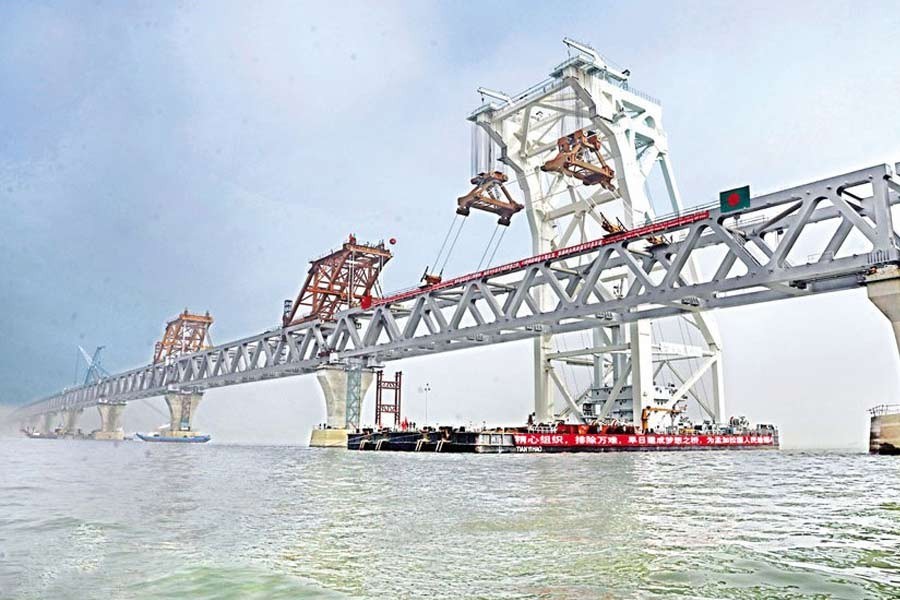Despite the government's desire and repeated announcement that trains and motorised vehicles would start using the Mawa-Jajira Padma Bridge the same day, reports that railway work is lagging come as a dampener of sorts. A front-page report carried by this paper last Saturday pointed to the existence of a 'dismal picture' in matters of project progress according to the latest status report. While three sections of the bridge-connecting railway track, namely Dhaka-Mawa, Mawa-Bhanga and Bhanga-Jessore are progressing, they are not doing it at the same rate casting doubts on set deadlines. According to the official status report, only the Mawa-Bhanga section has seen some good progress, the other two have fallen behind. One thorny issue has been the handing over of land to Chinese contractors, who claim not receiving it in a 'proper way', while the project authorities say they had handed it over in due time. Whichever side may be right, the status report points to the reality of certain problems in the mega project. Although such issues can always be thrashed out through the good offices of both sides, the fact remains that valuable time will be lost in the process. Indeed, unlike the other Padma Bridge that crosses this river between Paksey and Bheramara further upstream, where the railway and road portions had been built in two different eras, the first during the British colonial times and the second in the first years of this century offering great views of each other, this one is being built in one go, and on a deep and wide stretch of the river.
The Mawa-Jajira Padma Bridge is a novelty in the sense that this six-plus kilometre long crossing will have two decks, the upper one for motorised vehicles and the lower for trains. Not even the Bangabandhu Jamuna Bridge which later added a railway line on the side and only allows diminished speed for the trains can match this double-deck structure. No doubt, there have been problems besetting this project right from the start, not least the joint withdrawal of development partners at an early stage. When the government boldly decided to build it with own money, the Chinese were ready at hand with their vast bridge-building experience and not too small a kitty. As construction proper started, some geological problems under the riverbed at some points hindered progress. Now all problems have been overcome; all the spans have been put in place and the whole structure is now visible drawing visitors to the project site in droves.
This bridge beckons a new era for the country. The south-western districts stand to gain a lot, a projection of over two per cent in the growth of the gross domestic product having been calculated. The rate of return of the cost is invitingly positive. Cross-border trade facilitation and passenger-traffic with neighbouring India are destined to get a boost. The upcoming port of Payra in Patuakhali stands to gain hugely from the bridge. All these call for a quick resolution of the problems of unfinished work of the train lines, especially those on the Bhanga-Jessore section: dozens of culverts and major railway bridges remain unfinished and embankments have yet to be completed. After nearly a decade-long effort from the government and good wishes and prayers of the people, nobody would like to see any gap in the accomplishment of the task at this fag end. The nation would be waiting to see trains and trucks and buses ply on the bridge the same day as pledged for long, and for the whole distance of the project.


